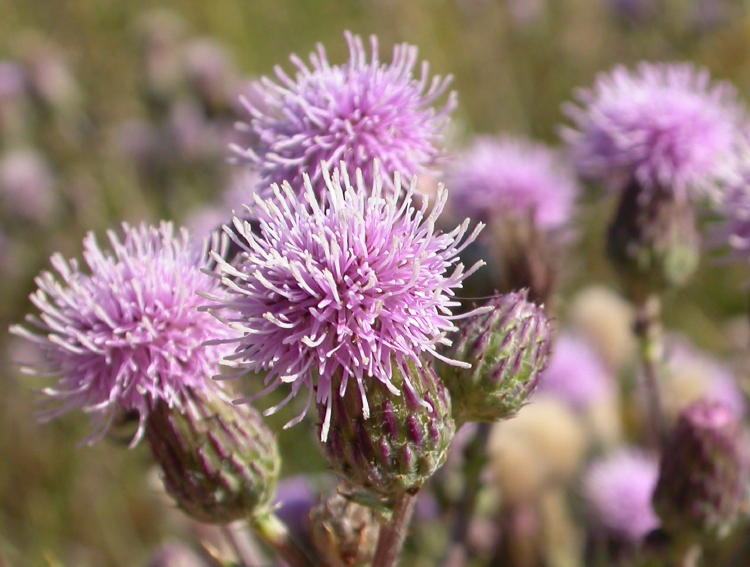
WITH SPRING COMES NOXIOUS WEEDS
Spring is here, the birds are chirping, the grass is turning green, and next comes the never ending yard work once again. However, raking the yard is one of the best times to keep our eyes peeled for those obnoxious weeds and invasives that
should be removed. Especially in the ditches where you might find Canada thistle, also known as creeping thistle, field thistle or California thistle. This species is listed as a prohibited noxious weed by the Michigan Department of Agriculture and Rural Development.

Photo courtesy of www.orgeonstate.edu.
Canada thistle was introduced to North America from Europe in the early 1600’s and is a perennial, which forms large monocultures or crops that can range in height from 2-5 feet. It has simple, alternate, lance-shaped, crinkly, irregular lobes and spiny toothed margins for leaves. With upright stems and slender branching towards the top, it becomes increasingly hairy with age.
During the June and September months numerous flowers bloom that are a purplish-lavender color, with small flower heads that cluster near the top. Canada thistle is commonly found in disturbed open areas, near roadsides, agricultural fields, and can even invade prairies and riparian areas such as river and stream banks.
This hearty little plant is even salt and shade tolerant, but its reproduction is just as impressive. One plant can produce anywhere between 1500-5000 seeds, which can germinate in less than 8-10 days after flowering begins and will persist in the seed bank for up to 20 years, making this plant a force to be reckoned with.
If dealing with Canada thistle the best efforts of control should begin with pulling seedlings 2.5 weeks after germination or sprouting (or they can become perennial). Canada thistle is clonal, meaning it will re-sprout from broken root fragments, making mechanical control methods ineffective after the plant has rooted itself. At this point the best method of control becomes herbicides. Generally two applications per season are needed: once in the spring and once just before flowering in June. Another application is also recommended in the fall on any new growth after mowing. Make sure to treat all the
stems or all that work can be ineffective! However different strains of Canada thistle respond differently to the same herbicide and may require up to 5-10 years of reapplication and ongoing efforts.
This species is extremely difficult to eradicate, so researching different control methods is a must. As spring cleaning takes place remember to check your ditches and keep your eye peeled for this hearty little bugger, and happy spring cleaning!
This article is part of the ongoing series on invasive species funded in part with funds from the Michigan Invasive Species Grant Program through the Departments of Natural Resources, Environmental Quality, and Agriculture and Rural Development

Why the hell is this being described as a noxious weed? all parts of the thistle are edible, we have starving and homeless people. these lawn regulations are ridiculous